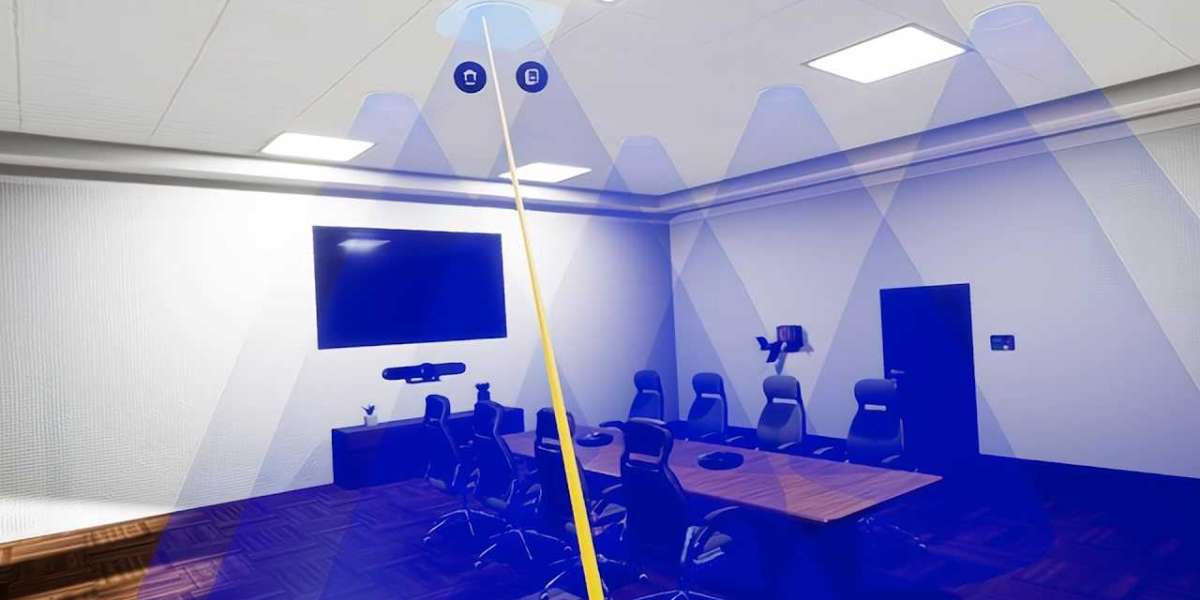Installing ceiling speakers for a home theater, multi-room audio, or commercial setup can be tricky without precise measurements. One of the most common challenges is determining how far apart to place each speaker for optimal sound coverage and clarity. This is where a ceiling speaker spacing calculator becomes invaluable. These tools help you plan your layout, ensure consistent sound, and maximize the performance of your audio system. Understanding how to use such a calculator, along with proper Ceiling Speaker Placement, can make the difference between a mediocre audio setup and an immersive listening experience.
Why Speaker Spacing Matters
Correct speaker spacing is essential for even sound distribution and minimizing audio issues such as dead zones or overlapping sound fields. Ceiling speakers, in particular, require careful placement because sound travels differently when emitted from above.
Improper spacing can result in:
Uneven volume across the room
Weak or muddled bass response
Poor imaging or stereo separation
Listener fatigue over extended use
A ceiling speaker spacing calculator takes into account room dimensions, ceiling height, speaker type, and intended usage to recommend ideal distances between speakers.
Getting Started with a Ceiling Speaker Spacing Calculator
Most calculators are simple to use and require only a few basic inputs:
Room Dimensions – Enter the length, width, and height of the room. These measurements help the calculator determine how sound will disperse.
Speaker Type – Specify the type of ceiling speaker you are using. Different models have varying dispersion angles that affect placement.
Listening Zones – Indicate where the main seating or listening area is located. This ensures optimal coverage where it matters most.
Installation Preference – Some calculators allow you to choose between a grid layout for even coverage or a focus on stereo imaging for home theater systems.
Once these details are entered, the calculator will generate recommended spacing between each speaker, including distances from walls, corners, and other boundaries.
Understanding the Calculator Output
The output from a ceiling speaker spacing calculator typically includes:
Speaker Grid Layout – Shows where each speaker should be positioned relative to the room and seating area.
Distance from Walls – Ensures speakers are far enough from walls to avoid reflections that can distort sound.
Spacing Between Speakers – Prevents overlapping sound fields or gaps in coverage.
Coverage Map – Some advanced calculators provide a visual representation of sound coverage across the room, highlighting areas of higher or lower intensity.
This output serves as a blueprint for your installation, helping you make informed decisions about placement and minimizing trial and error.
Best Practices for Ceiling Speaker Placement
Even with a spacing calculator, there are several principles to follow for optimal Ceiling Speaker Placement:
Maintain Equal Distances – When possible, keep speakers evenly spaced to create a consistent sound field.
Avoid Corners – Placing speakers too close to corners can cause reflections and uneven bass response.
Account for Ceiling Height – Higher ceilings require wider spacing and sometimes speakers with broader dispersion angles.
Angle or Pivot Speakers – Adjustable speakers can be aimed toward the main listening area, improving clarity and imaging.
Consider Room Acoustics – Hard surfaces reflect sound, while carpets and curtains absorb it. Take these factors into account when using the calculator.
Following these guidelines alongside the calculator’s recommendations ensures a balanced and immersive listening environment.
Common Uses of a Ceiling Speaker Spacing Calculator
Whole-Home Audio Systems – For multi-room setups, spacing calculators help determine how many speakers are needed and where to place them in each zone for uniform coverage.
Home Theaters – Accurate spacing ensures precise imaging and surround sound performance, especially for 5.1, 7.1, or Dolby Atmos setups.
Commercial Spaces – Retail stores, restaurants, and offices can benefit from even sound distribution to create a pleasant auditory environment for customers and employees.
Event Spaces – Ballrooms, conference rooms, and auditoriums require careful speaker placement to cover large areas without creating hot spots or dead zones.
Tips for Using a Ceiling Speaker Spacing Calculator Effectively
Measure Accurately – Input exact room dimensions to get precise spacing recommendations.
Include Obstacles – Factor in furniture, columns, or lighting fixtures that may interfere with sound propagation.
Use Multiple Calculations – Try different speaker types and layouts to see which configuration provides the best coverage.
Check with Manufacturer Guidelines – Ceiling speaker manufacturers often provide recommended spacing ranges that can be cross-referenced with calculator results.
Test Before Final Installation – Temporarily position speakers and play audio samples to confirm coverage and adjust as needed.
Benefits of Using a Calculator
Using a ceiling speaker spacing calculator provides several advantages:
Time Savings – Eliminates guesswork and reduces trial-and-error installation.
Better Sound Quality – Ensures even coverage and reduces common audio issues.
Cost Efficiency – Prevents the need to purchase extra speakers or reposition units after installation.
Professional Results – Helps homeowners and installers achieve a polished, immersive audio experience.
Final Thoughts
A ceiling speaker spacing calculator is a valuable tool for anyone planning a whole-home audio system, home theater, or commercial sound installation. By factoring in room dimensions, speaker type, and seating zones, the calculator provides a precise blueprint for placement, minimizing errors and improving sound quality.
Proper Ceiling Speaker Placement combined with accurate spacing ensures balanced audio, consistent coverage, and a professional-quality listening experience. Whether you are installing a single room setup or a complex multi-zone system, using a ceiling speaker spacing calculator makes the process easier and guarantees that your investment in high-quality audio pays off.
By following these steps and recommendations, you can confidently plan and install ceiling speakers that deliver immersive sound throughout your home or commercial space.
Read more: https://myliveroom.com/blogs/23880/Stereo-vs-Mono-Ceiling-Speakers-for-Whole-Home-Audio








